Seared Salmon with Creamy Pasta and Mushroom
We may earn a commission from recommended products, at no extra cost to you. See Disclosure.
INGREDIENTS
- 3 salmon fillets, skin on
- Kosher salt
Pasta:
- 1 pound/450 grams your favorite pasta
- 2 tablespoons olive oil, plus more for searing
- 2 tablespoons/25 grams unsalted butter
- 2 shallots, finely chopped
- 1 clove garlic, minced
- 8 ounces/225 grams mixed mushrooms, such as cremini and portobello, sliced
- 2 cups/500 milliliters heavy whipping cream
- ½ cup/50 grams Parmesan cheese, grated
- Salt and freshly ground black pepper, to taste
INSTRUCTIONS
- Season both sides of the fillets with salt. Wrap and refrigerate while preparing the pasta.
- Bring a large pot of salted water to a boil. Cook pasta according to package instructions until al dente. Reserve ½ cup of pasta water, then drain.
- In a large skillet over medium heat, melt butter with olive oil. Add shallots and sauté until soft, about 2 minutes. Stir in garlic and mushrooms, cooking until mushrooms are tender and golden, about 5 minutes.
- Pour in the heavy whipping cream, season with salt and pepper, and bring to a gentle simmer. Let the sauce reduce slightly, about 5 minutes. Stir in Parmesan cheese until melted and smooth. Add the cooked pasta to the sauce, tossing to coat. If needed, add reserved pasta water to loosen the sauce. Remove from heat.
- Heat a drizzle of olive oil in a skillet over medium-low heat. Place the salmon fillets skin-side down and cook for about 8 minutes, until the skin is crisp and golden. Flip and cook the other side for 6-8 minutes, until the salmon is just cooked through.
- Plate the creamy pasta, top with a salmon fillet, and finish with an extra sprinkle of Parmesan. Serve immediately and enjoy!
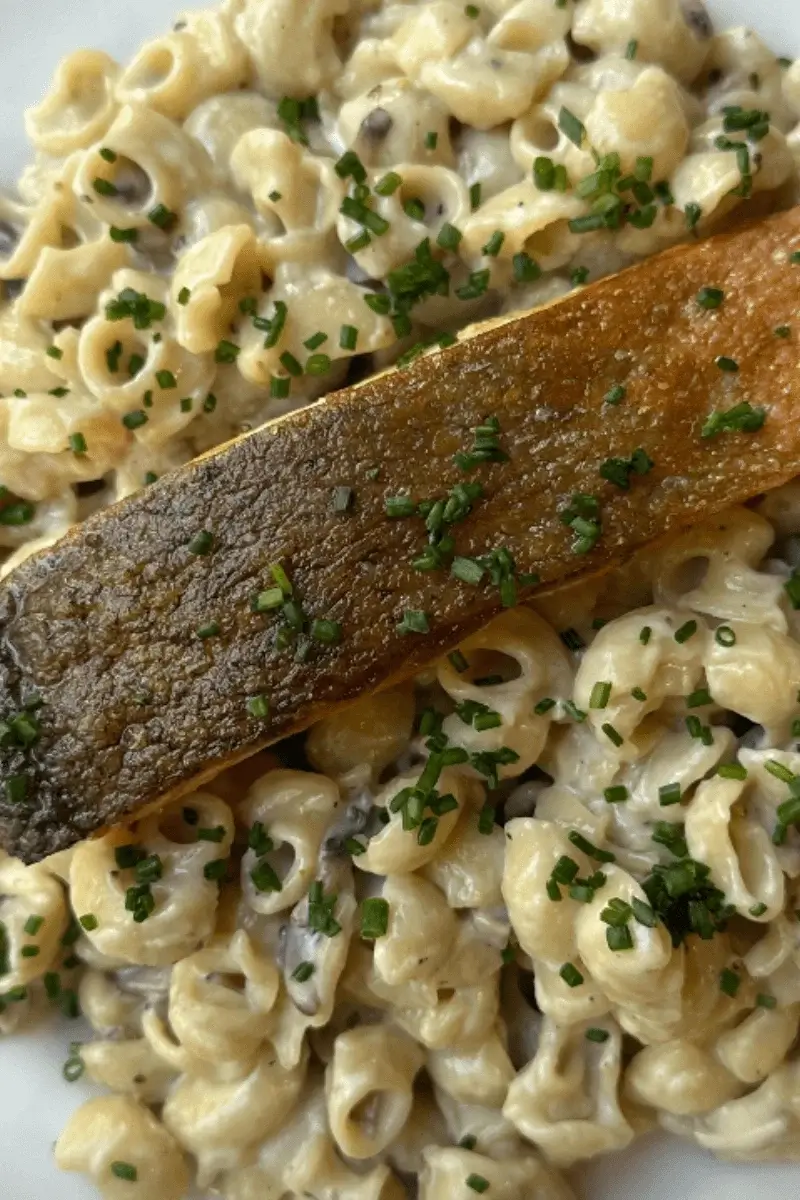
FAQ
What type of salmon works best for this recipe?
The best salmon for this recipe is fresh, high-quality fillets with the skin on. Wild-caught salmon, such as sockeye, coho, or king salmon, offers better flavor and texture compared to farmed varieties. However, farmed Atlantic salmon is more widely available and has a milder taste with a higher fat content, which can work well in a creamy dish. When selecting salmon, look for fillets that are firm, moist, and free of any strong fishy odors. Skin-on fillets are preferred because they develop a crispy texture when seared properly, adding a contrasting crunch to the creamy pasta.
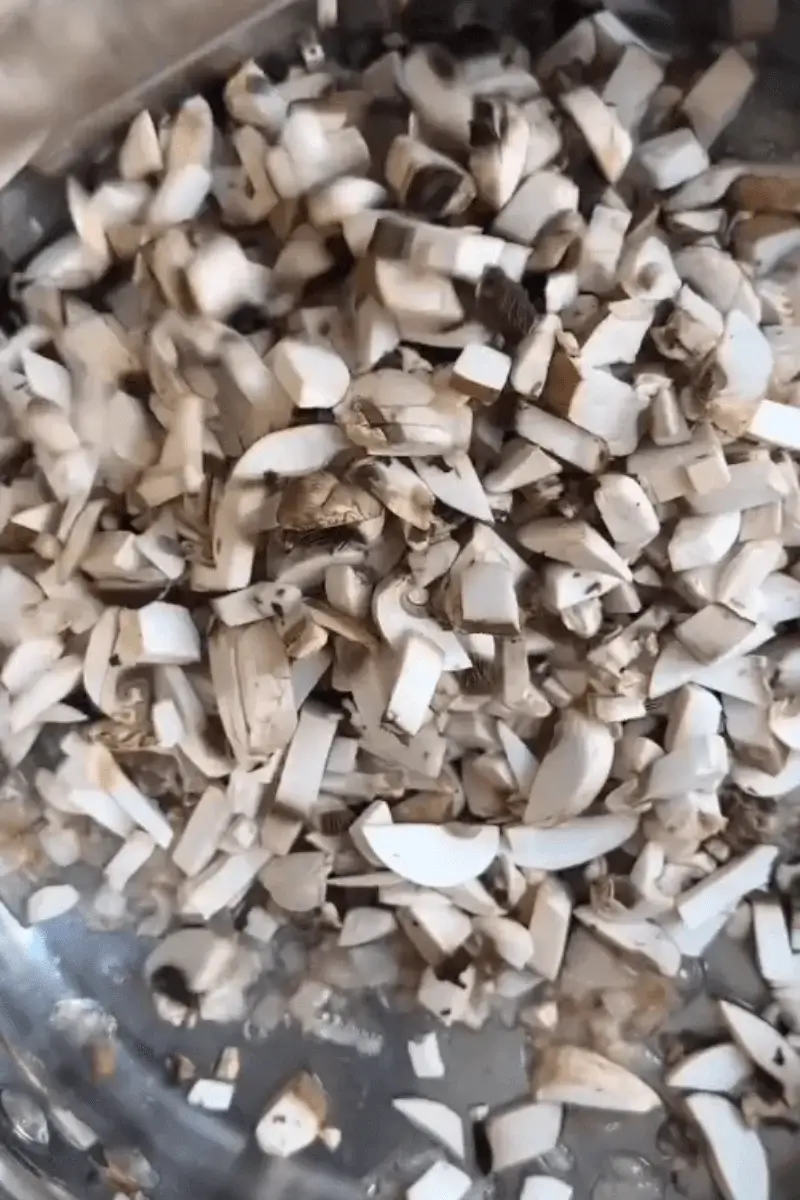
How can I make the sauce thicker or thinner?
To thicken the sauce, let it simmer longer to reduce and concentrate the cream, or add more grated Parmesan, which helps emulsify and thicken the mixture. Another option is to mix a small amount of cornstarch or flour with cold water and stir it into the sauce, allowing it to cook for a minute or two until it thickens. To thin the sauce, add a little reserved pasta water, which contains starch and helps maintain the creamy consistency. You can also use a splash of milk or broth to loosen the sauce without diluting the flavor too much.
What’s the best way to get crispy salmon skin?
To achieve crispy salmon skin, start with a dry fillet by patting it down with paper towels before cooking. Heat a pan over medium-high heat and add a small amount of high-smoke-point oil, such as avocado or vegetable oil. Place the salmon skin-side down in the hot pan and press it gently with a spatula for the first 30 seconds to prevent curling. Cook without moving the fish for about 6-8 minutes, allowing the skin to become golden and crisp. Flip and cook for another 2-4 minutes, depending on thickness. Avoid overcrowding the pan, which can cause steaming instead of crisping.
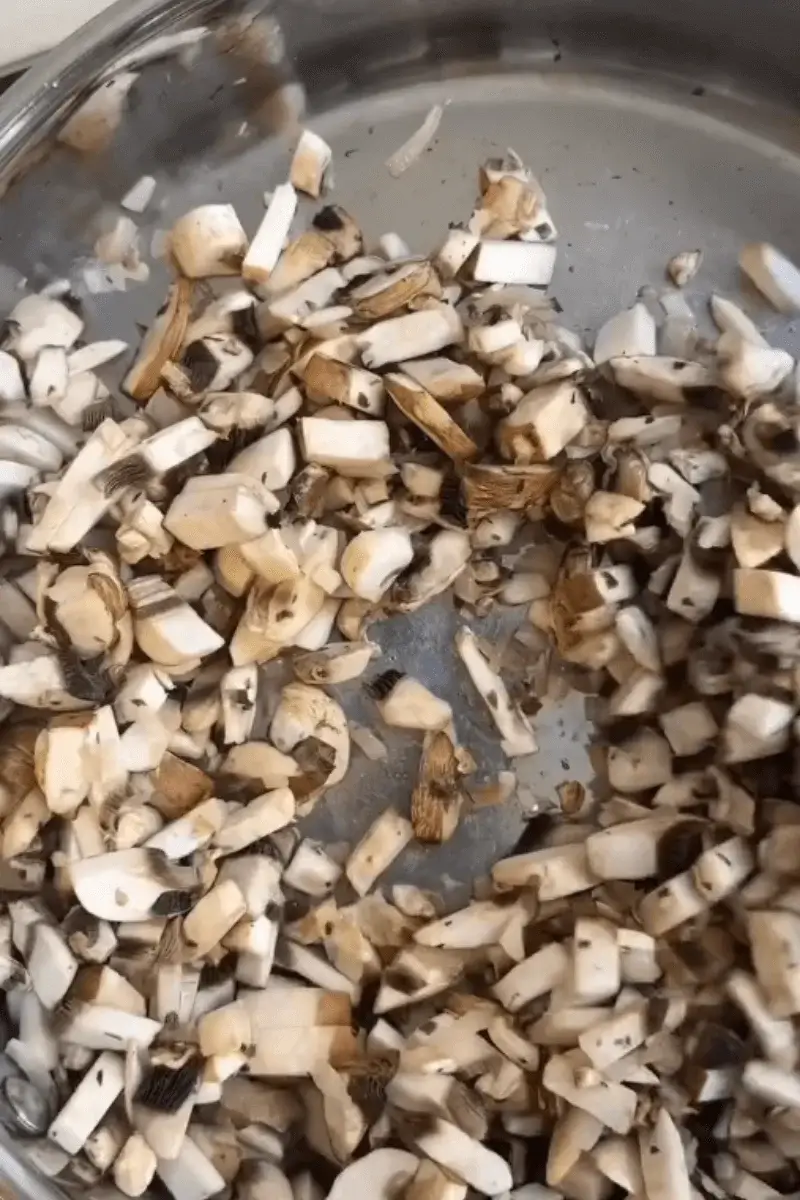
Can I substitute the heavy cream with a lighter option?
Yes, but it will affect the texture and richness of the sauce. Half-and-half or whole milk can be used for a lighter consistency, but they won’t thicken as well, so you may need to add a small amount of flour or cornstarch. Greek yogurt or crème fraîche can work as well, though they add a slight tanginess. A dairy-free alternative is full-fat coconut milk, which provides creaminess but changes the flavor profile slightly. If using a lower-fat option, be careful not to overheat the sauce, as lower-fat dairy is more prone to curdling.
What other cheeses can I use instead of Parmesan?
If you don’t have Parmesan, you can use other hard, aged cheeses with a similar salty and umami-rich profile. Pecorino Romano is a great alternative, though it has a slightly sharper and saltier taste. Grana Padano is milder and creamier but works just as well. Asiago provides a nutty flavor, while aged Gouda or sharp cheddar can add a different depth. If you want a milder, meltier texture, Fontina or Gruyère can be mixed in, though they will slightly alter the sauce’s consistency. Always grate the cheese finely for better melting and incorporation into the sauce.
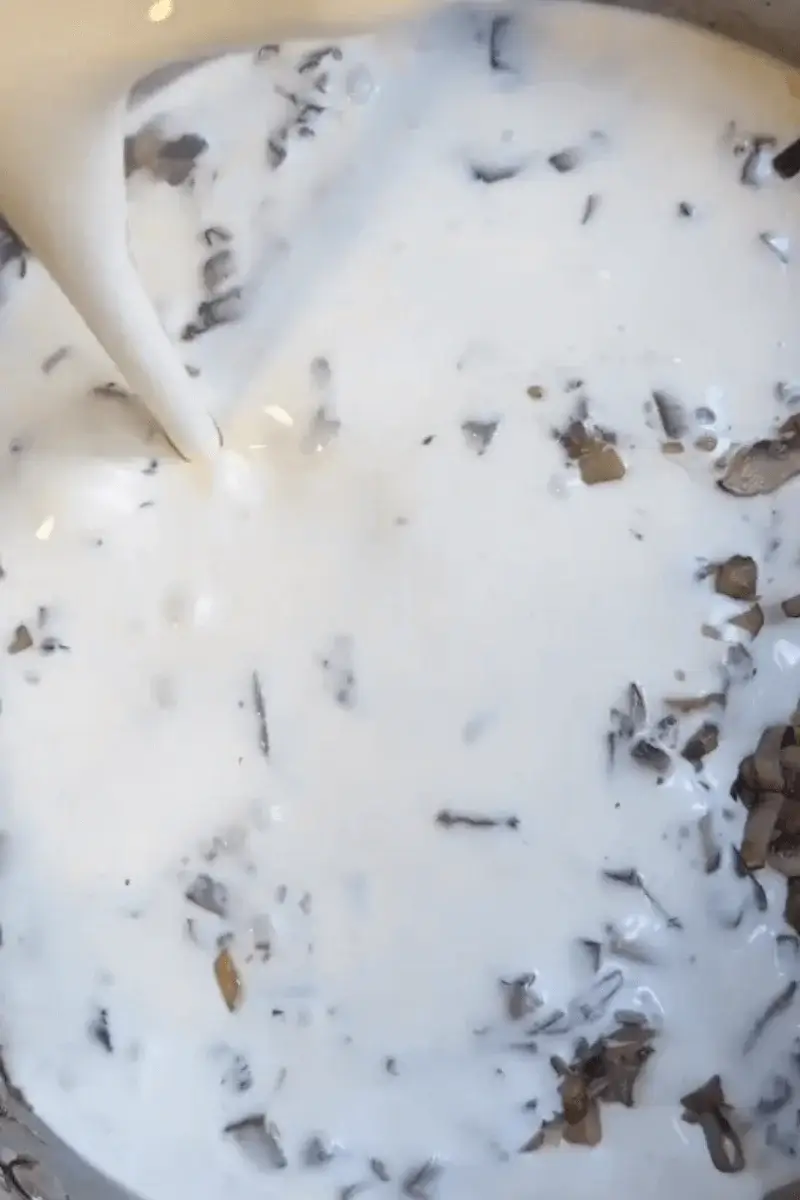
How do I prevent the sauce from becoming too greasy?
To prevent a greasy sauce, use high-quality dairy ingredients with the right fat content. If the sauce appears oily, it’s often due to overheating or using too much butter or cheese. Simmer the sauce gently rather than boiling it, as excessive heat can cause the fats in the cream to separate. Adding cheese too quickly or in large chunks can also lead to oil separation, so grate it finely and incorporate it gradually. If the sauce does become greasy, whisk in a small amount of pasta water or a splash of milk to re-emulsify it.
Can I make this salmon with creamy pasta ahead of time?
While this salmon with creamy pasta is best enjoyed fresh, you can prepare parts of it in advance. The pasta can be cooked and tossed with a little olive oil to prevent sticking, then stored in an airtight container for up to two days. The sauce can be made ahead and refrigerated for up to three days, but it may thicken, so reheat it gently with a splash of milk or pasta water. The salmon should be cooked fresh for the best texture, as reheating can dry it out. If you must reheat the salmon, do so in a low-temperature oven or a covered pan over low heat.
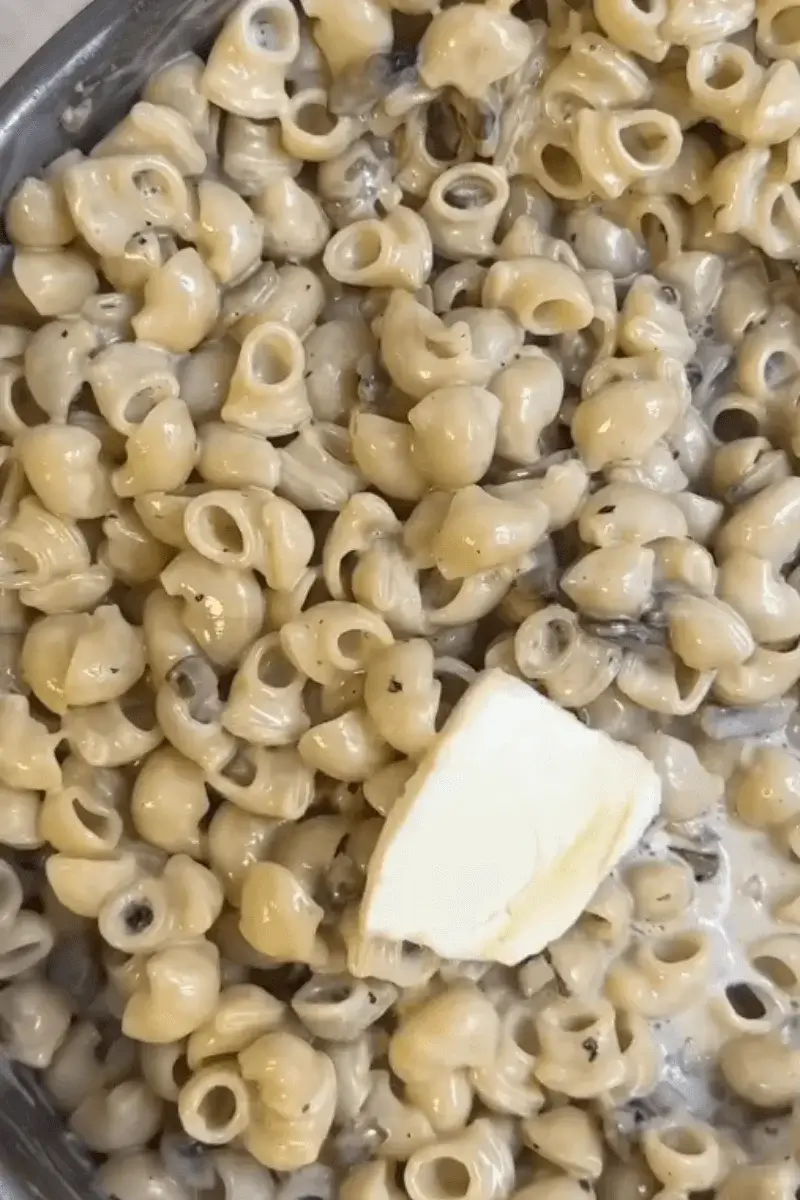
What vegetables pair well with salmon with creamy pasta?
Salmon with creamy pasta pairs well with vegetables that balance the richness of the creamy pasta and salmon. Asparagus, spinach, or arugula add a fresh, slightly bitter contrast. Roasted or sautéed zucchini, bell peppers, or cherry tomatoes bring a subtle sweetness. Mushrooms already feature in the sauce, but adding extra varieties like oyster or shiitake can deepen the flavor. For a crunchy contrast, lightly steamed or roasted green beans work well. If you want something more refreshing, a simple side salad with a lemon vinaigrette complements the dish’s richness without overpowering it.
Can I use frozen salmon for this recipe?
Yes, but it’s important to thaw it properly before cooking. The best way to thaw salmon is to place it in the refrigerator overnight. If you’re short on time, you can use the cold water method by submerging the salmon in a sealed plastic bag in cold water for about 30 minutes, changing the water every 10 minutes. Avoid microwaving, as this can lead to uneven defrosting and a rubbery texture. Once thawed, pat the fillets dry thoroughly to remove excess moisture, which helps with even cooking and crisping of the skin.
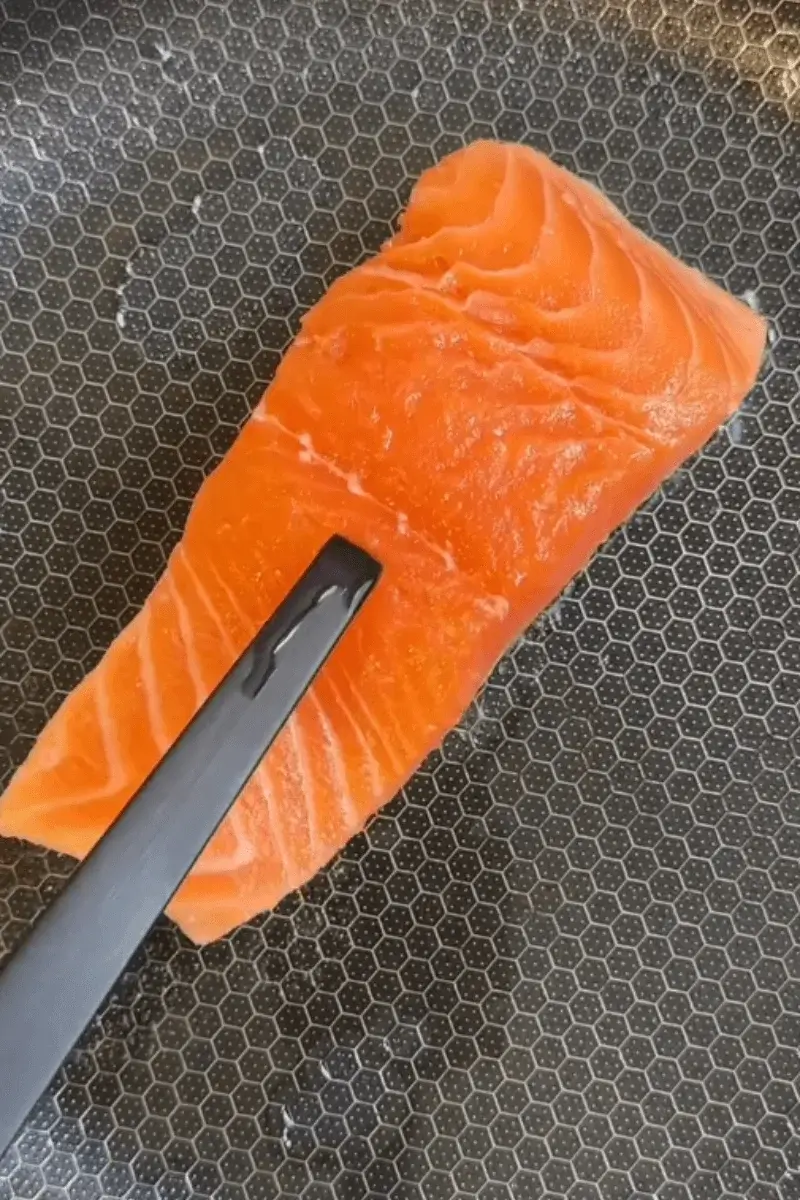
How do I keep the pasta from clumping together?
To prevent pasta from sticking together, cook it in a large pot with plenty of salted boiling water, stirring occasionally. Using a pot that is too small can cause overcrowding, leading to uneven cooking and clumping. After draining, toss the pasta with a little olive oil if you’re not adding it to the sauce immediately. If the pasta sits for too long, briefly rinse it under warm water to separate the strands before adding it to the sauce. However, it’s best to combine the pasta with the sauce right away so it absorbs the flavors properly.
Best way to reheat salmon with creamy pasta
Reheating the creamy pasta can be tricky because the sauce tends to thicken and dry out. The best method is to reheat it gently on the stovetop over low heat, adding a splash of milk, cream, or reserved pasta water to loosen the sauce. Stir frequently to prevent sticking. If using a microwave, heat in short 30-second intervals, stirring in between and adding liquid as needed. The salmon should be reheated separately in a low oven (275°F/135°C) for about 10 minutes to prevent drying out. Avoid using high heat, as this can cause the sauce to separate.
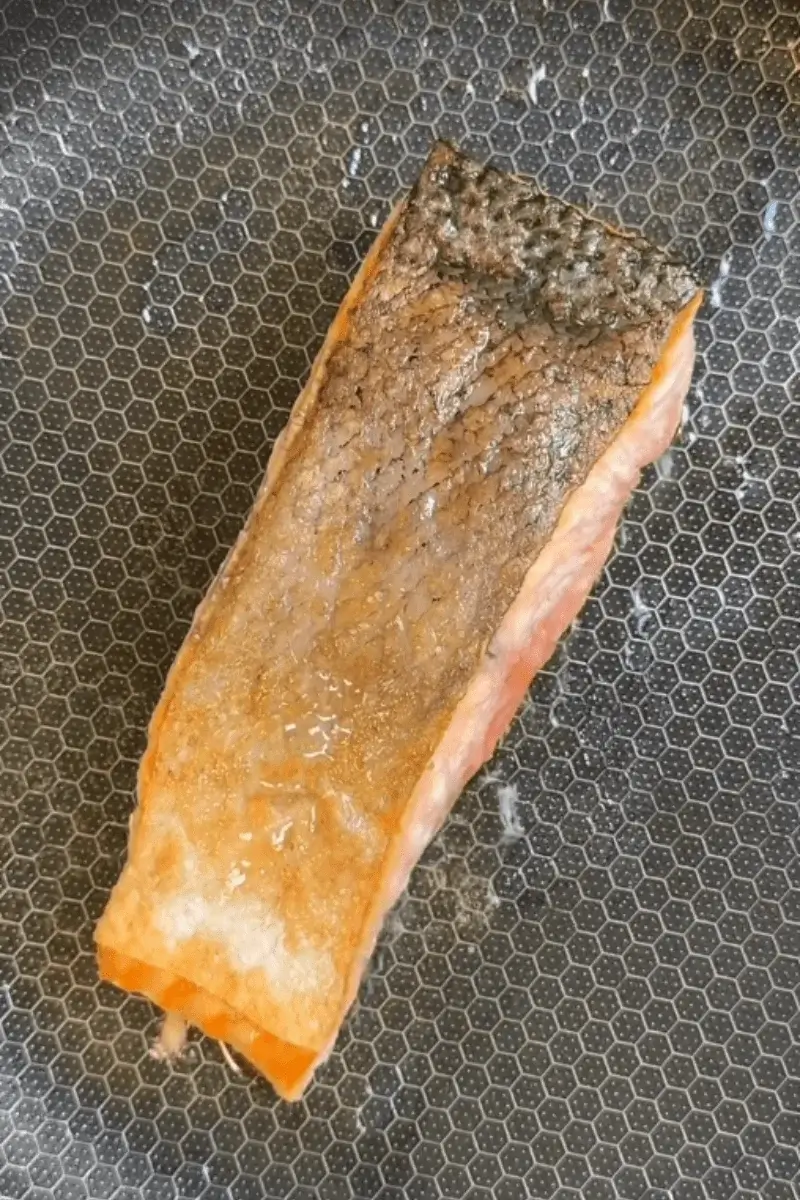
How do I know when the salmon is cooked perfectly?
Salmon is best cooked to an internal temperature of 125-130°F (52-54°C) for medium-rare or 135-140°F (57-60°C) for medium. It should flake easily with a fork but still be slightly translucent in the center. Overcooking can lead to dryness, so it’s best to remove the salmon from the heat just before it reaches the desired doneness, as residual heat will continue to cook it. If you don’t have a thermometer, check for doneness by pressing gently on the fillet; it should feel firm but still have some give.
Can I add wine to this salmon with creamy pasta recipe?
Yes, a splash of dry white wine can enhance the sauce’s depth of flavor of this salmon with creamy pasta dish. Sauvignon Blanc, Pinot Grigio, or Chardonnay work well without overpowering the dish. Add the wine after sautéing the shallots, garlic, and mushrooms, allowing it to reduce for a minute or two before adding the cream. This helps remove the raw alcohol taste while concentrating the wine’s flavor. If you prefer a non-alcoholic option, a small amount of lemon juice or vegetable broth can provide a similar acidity that balances the richness of the sauce.

